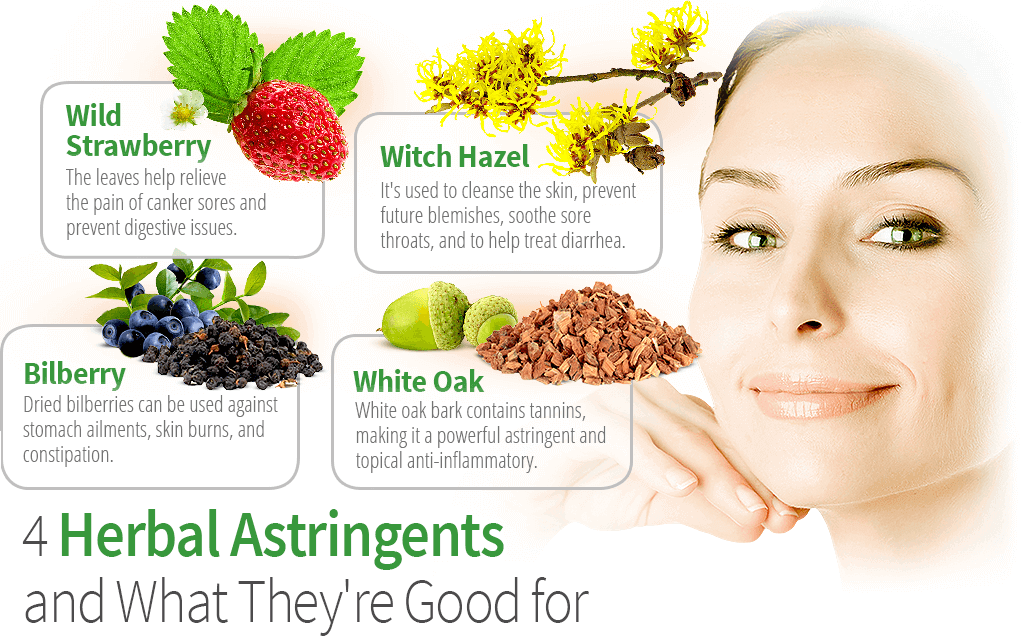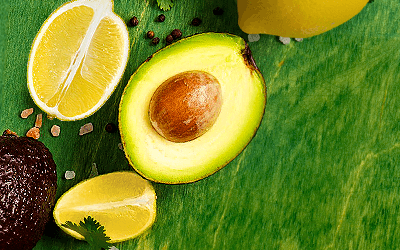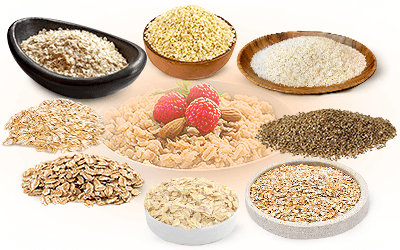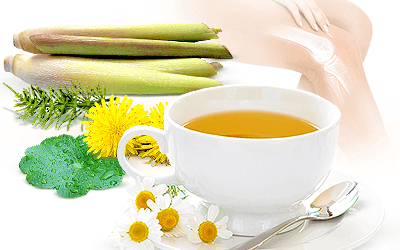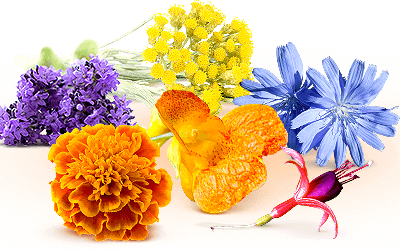Tannins are chemical compounds that help shrink pores and constrict body tissue. Because of their astringent properties, they are typically found in beauty products for treating skin irritations, such as acne. They are also used to relieve allergies, insect bites, and fungal infections. Astringents work well for those who are prone to oily skin. The following are four astringent herbs that are rich in tannins and antioxidants.
1. Wild Strawberry (Fragaria vesca)
This perennial plant that produces edible fruit contains high amounts of tannins.1,2 The leaves of the wild strawberry plant are used to make an anti-inflammatory tea that can reduce swollen sores inside the mouth. The astringent properties of the leaves can also offer relief from digestive issues.
2. Witch Hazel (Hamamelis virginiana)
Witch hazel is an excellent herb to keep on hand. Like wild strawberries, witch hazel contains a high concentration of tannins, making it a great herbal astringent. It is mainly the leaves and bark that are used in products containing the herb. Witch hazel is used to protect the skin, and the herb can also be used to prevent future blemishes.3 When consumed internally, witch hazel helps treat diarrhea and throat irritation.
3. Oak (Quercus spp)
Another potent astringent, oak is a giant tree native to North America. The powerful astringent properties lie in the bark. Although it is used for smoking fish and making furniture, it is also a good source of tannins and iron. A particular oak variety, white oak (Quercus alba), is also consumed as a tea and used to create skincare products.4 Oak bark has also been known to treat infections and protect against harmful bacteria. The herb is also used as a diuretic that can improve bladder health.
4. Bilberry (Vaccinum myrtillus)
The dried berries of the bilberry plant are used for their astringent powers, which mainly benefits the skin but also treat a multitude of illnesses, from stomach ails to burns.5 The leaves can also be used in tea to suppress coughs, while berries aid in regulating bowel movements and stimulating appetite.
Typical over-the-counter astringents may contain potential allergens. In order to ensure you are getting the purest and most natural products with the lowest risk of allergic reaction, try out any of the above mentioned herbs that work just as well as the store-bought options.
Sources
- Encyclopedia of Herbal Medicine
- The Herb Book, pp. 113, 39
Footnotes:
- Antioxidants, (2020), Fragaria vesca L. Extract: A Promising Cosmetic Ingredient with Antioxidant Properties. Retrieved April 22, 2022, from: https://www.ncbi.nlm.nih.gov/pmc/articles/PMC7070388/
- Scientific Reports, (2020), Genetic analysis of phenylpropanoids and antioxidant capacity in strawberry fruit reveals mQTL hotspots and candidate genes. Retrieved April 22, 2022, from: https://www.ncbi.nlm.nih.gov/pmc/articles/PMC7677386/
- Dermatology, (1998), Anti-inflammatory effect of hamamelis lotion in a UVB erythema test. Retrieved April 22, 2022, from: https://pubmed.ncbi.nlm.nih.gov/9621139/
- Journal of Drugs and Dermatology, (2019), Applications of Topical Oak Bark Extract in Dermatology: Clinical Examples and Discussion. Retrieved April 22, 2022, from: https://pubmed.ncbi.nlm.nih.gov/30811144/
- Pharmacognosy Research, (2011), Anthocyanins from bilberry (Vaccinium myrtillus L.) alleviate pruritus in a mouse model of chronic allergic contact dermatitis. Retrieved April 22, 2022, from: https://pubmed.ncbi.nlm.nih.gov/22022165/


